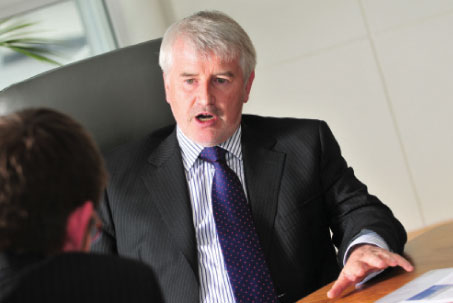
Collier: “One of the striking factors of the downturn is that it has been so swift – the operating environment has changed in an unprecedented way.”
DAA can be satisfied with its performance in 2008 against the background of an increasingly difficult operating environment in the second half of the year. Overall passenger numbers across the three airports declined 0.6% to 29.9 million. Dublin (23.5 million) and Cork (3.3 million) handled record passenger numbers, largely underpinned by steady growth in the first half of the year. Shannon saw traffic fall by 12%. The company is forecasting an 11% drop in passenger numbers this year across its three Irish airports; Cork has been particularly affected, with throughput down 14% this year, while Dublin has seen a 10% decline. “One of the striking factors of the downturn is that it has been so swift – the operating environment has changed in an unprecedented way. Fuel prices had given us some indication of what was to come, but it was only from October that we began to see the real impact on passenger numbers,” said Collier. “Like every airport globally we’re facing difficulties – we see a decline in passenger numbers and commercial revenues have also been hit, but we are addressing things in a prudent and commercial manner.”

The new Terminal 2 is central to the Transforming Dublin Airport capital programme. Construction of the 75,000sqm, €610 million facility will be complete in February 2010 and the terminal will open fully in November 2010, following commissioning and testing.
DAA’s prudent strategy includes 400 voluntary redundancies, which it announced in May that it is seeking as part of the cost-containment programme. “One of the options we have to look at is a reduction in the number of staff,” said Collier, while emphasising that it is voluntary redundancies that are being sought.
Transforming Dublin Airport
As part of a number of investments outlined for Dublin Airport, work on the €1.2 billion Transforming Dublin Airport capital programme continues and will be completed over the next 18 months. The new Terminal 2 is central to this and Collier believes it will position Ireland to take advantage of the economic upturn when it comes. “We believe the new terminal will stimulate traffic and help make Ireland a more attractive destination for investment, business and leisure travel,” he said.
Construction of the 75,000sqm, €610 million facility will be complete in February 2010 and as agreed with principal tenant Aer Lingus, the terminal will open fully in November 2010, following commissioning and testing. The new US Customs and Border Protection (CBP) facility will be a unique feature of Terminal 2. “Departing passengers will clear US Customs and Immigration before taking their flight. It will mean the first queue passengers see when they arrive in the US will be the taxi queue. Airlines will save $30-40 per passenger, as travellers will land as domestic passengers,” explained Collier.
Pier E is another integral part of the Terminal 2 project. It will have parking for up to 19 short-haul or 8 long-haul aircraft and at 24,000sqm will be 60% bigger than Pier D, which opened in November 2007. “We launched the programme in 2005 and have been progressively delivering infrastructure since then, including Area 14 which is used by Aer Lingus, Pier D which was built to facilitate fast turnarounds, and the extension to Terminal 1 which opened recently and provides an improvement in connectivity,” said Collier. The €54 million T1X facility improves the passenger journey to Pier A and Pier D and also provides additional airside retail and food and beverage.
When asked about the economic role of airports, Collier underlined the particular relevance of this to DAA. Collier provided some impressive statistics – 60% of passengers use Dublin as their point of access to the island as a whole and 75% for access to the Republic of Ireland. “Dublin Airport’s role in the Irish economy is undeniable as there is no land bridge between us and mainland Europe and there is not likely to be one. There are 15,000 jobs on campus and the airport accounts for 25% of total regional revenues. When it comes to stimulating the economy, we’re a big player. US firms have €87 billion worth of investments in Irish assets, which is more than the total invested in the BRIC economies of Brazil, Russia, India and China combined,” said Collier. “We have invested €800 million in our capital programme to date and €1.2 billion will have been invested by the end of next year to give passengers a much improved travel experience.”
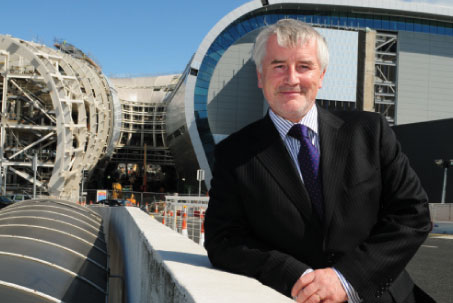
“One of the dangers for the industry is that we’ll become overregulated and overcontrolled. Regulation can be essential when there is market failure – in our industry I don’t see that we have market failure. We have a dynamic multi-faceted business model and significant competition is happening between airports,” said Collier.
Regulatory environment
Before DAA started construction of Terminal 2 in 2007, the Commission for Aviation Regulation (CAR), which sets airport charges at Dublin Airport, signalled that it would remunerate the new terminal and other projects when it made its next determination in 2009. DAA is about to enter a new five-year regulatory period, with a decision due in October for charges to 2015. It is a subject on which Collier is particularly animated. He explained that it is imperative that the regulator sanctions a price increase to cover the cost of the new facilities being delivered. The regulator’s decision, alongside DAA’s cost recovery programme, is fundamental to the financial future of the company. The current passenger charges at Dublin Airport are among the lowest of any major European airport and have, according to Collier, actually fallen by more than 30% in real terms, compared with charges 20 years ago.
He believes that the work done by ACI EUROPE, in tandem with the European Commission and European Parliament, on the Airport Charges Directive achieved the best possible result. “It has removed a lot of the smaller airports from that regulatory net,” he said. “One of the dangers for the industry is that we’ll become overregulated and overcontrolled. Regulation can be essential when there is market failure – in our industry I don’t see evidence of market failure. We have a dynamic multi-faceted business model and significant competition is happening between airports. It is important to drive costs down and increase efficiency and the evolution of the airport industry over the past 20 years has seen that happen.”
Regulation has, said Collier, largely concentrated on the airline as the user, when regulation should concentrate on the passenger as the user. “With ACI EUROPE, Dublin Airport Authority will continue to push for that kind of change – regulation should only be brought in when there is market failure.”
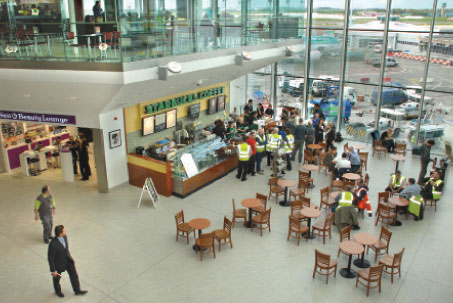
The €54 million T1X facility improves the passenger journey to Pier A and Pier D and also provides additional airside retail and food and beverage.
Collier is forthright in asserting that the airport-airline relationship has become confrontational. “The regulatory process in Ireland encourages confrontation between us and our airline customers; and it holds back required investment.” He acknowledges the difficulties airlines face in making a profit – as evidenced by British Airways’ recently-released figures for the 12 months to 31 March 2009 which show a loss before tax of £401 million (€460m), following a revised profit of £922m (€1bn) in the previous year. “Airports and airlines are mutually dependent but have different business timelines that drive them. Airports have to plan 20-30 years ahead, airlines planning is much more short-term. We need to deliver things in the future that sometimes airlines feel they might not be here to see – that is why there needs to be a focus on the needs of the passenger,” said Collier.
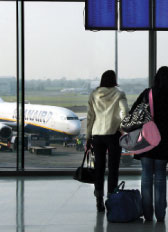
Collier’s three key areas of focus for the remainder of 2009 are to reduce costs, drive up revenues and deliver the planned infrastructure programme on time and to budget.
Immediately prior to this interview, Collier was reviewing DAA’s submission to the regulator on charges. The regulator requires consultation with the airlines, to which Collier has no objection. However, despite DAA having reduced its capital expenditure programme for the 2010-2014 period by around 50% to less than €400 million to take account of the current economic downturn, the airlines only approved one out of all the capital investment projects.
A number of major projects, including the planned new second runway and additional aircraft parking areas, will be deferred. These projects will be reactivated when appropriate circumstances dictate. This scaled-down investment programme is effectively the minimum level of spend required to keep the airport functioning safely and efficiently, coupled with a small number of revenue generating projects. It includes an overhaul of the existing runway, and the reconstruction of certain aircraft parking stands and taxiways.
Dublin Airport City
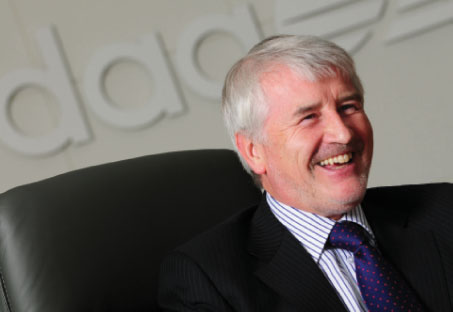
Collier: “We have invested €800 million in our capital programme to date and €1.2 billion will have been invested by the end of next year to give passengers a new experience.”
Collier explained that the €4 billion Dublin Airport City development stems from the regulatory environment and confrontation between airports and airlines. “Airports are being squeezed by airlines to reduce charges. How do you finance growth?” DAA has already proven successful at developing non-aeronautical revenues – 70% of overall revenues are generated from commercial activities. “We are coming to the end of driving that stream further. Development of the Airport City, which is government-supported, is fundamental to supporting the future development of the airport,” said Collier.
Dublin Airport City will be constructed on 350 acres of land east of the airport on a phased basis over a 15-20 year period, with the first occupation expected in 2012/13. It is designed to be a world class economic zone for international business headquarters, targeting foreign direct investment into Ireland, and will generate 30,000 jobs and a forecast €1 billion per year for the Irish economy. A sustainable initiative, it will, explained Collier, meet the highest environmental standards. Significantly, it is said that tenants will be able to transfer from their office desk to the check-in desk in six minutes; a high-speed automated people mover will link the Airport City with the proposed Metro North station at the airport.
“The clustering of travel intensive businesses at Dublin Airport City will sustain the ongoing development of Dublin Airport. Crucially, it will help the airport maintain its status as one of the most competitive airports globally and position Ireland as a key gateway to world economies,” said Collier. “We are in discussions with one of the world’s largest medical facilities with regards to opening a facility here, as well as an academic institution.”
The education, training and research institute focused on aviation services would be Ireland’s first educational facility dedicated to aviation, with an emphasis on areas such as the master planning of airports and aviation financing.

The Apron 6 project was the largest apron development ever undertaken at Dublin Airport. The apron area, the final phase of which was completed last September, is located west of the crosswind runway, to the southwest of Pier D.
Environmental initiatives
With all the investments and active transformation at DAA’s airports in recent years, where does the environmental debate fit into
their priorities?
“The environment is an increasingly important part of the aviation industry debate. Aviation is a relatively small contributor to global greenhouse gas emissions, but it is an unquestionably emotive sector for the public.”
DAA has committed its three airports to Airport Carbon Accreditation, launching at the ACI EUROPE Annual Congress in Manchester. “We support Airport Carbon Accreditation fully and whole-heartedly. We’ve been going through the early stages of benchmarking – looking to reduce carbon emissions,” said Collier.
Environmental developments underway include water attenuation facilities, three new combined heat and power plants, a new reservoir, and updated electrical and gas supplies. “A new metro to the airport will be delivered in 2013/14 – 28% of passengers already arrive by bus,” said Collier. There is also a new scheme to encourage staff to travel to the airport by alternative means to their car.
Strong air and water monitoring programmes are in place and Terminal 2 will be 26% more efficient than the proposed EU standard.
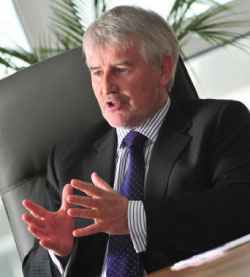
“The clustering of travel intensive businesses at Dublin Airport City will sustain the ongoing development of Dublin Airport. Crucially, it will help the airport maintain its status as one of the most competitive airports globally and position Ireland as a key gateway to world economies,” said Collier.
Safety and security
The lack of harmonisation on the LAGs issue is, said Collier, damaging in terms of revenues. “One of the most interesting aspects with safety and security is the need for a harmonised approach on a global level. If we are not careful, we are in danger of introducing systems with no synergy. The key priority is the safety and security of passengers. In terms of lobbying, a key point is that where regulation occurs, that it should be done across the board,” said Collier.
He also emphasised that there are different threat levels depending on location and that international bodies need to take costs
into account.
Open Skies
Collier described the EU-US Open Skies agreement as very positive. “Liberalisation is critical to economic growth; we need to liberalise the industry.” He stressed the need to move to the second stage of Open Skies, which he said would deliver real economic growth in the long-term. “In Ireland, Open Skies is very positive. Ireland accounts for 3% of transatlantic passenger flow, which is significant given the size of the economy. There has been an upsurge in interest from US airlines. All the major US carriers, with the exception of United, have services to/from Dublin. Even in the downturn, we see that those airlines are still committed,” said Collier.
The transatlantic market at Dublin grew by 14% in 2008 with new routes launched as a result of Open Skies, as well as a number of new Canadian routes. This growth led to an additional 210,000 passengers travelling through Dublin on direct transatlantic services.
There are currently 200 direct routes out of Dublin and the aim is to grow the long-haul network – Terminal 2 gives DAA the opportunity to do just that. There is strong potential seen for services to the Gulf region and Middle East. A successful partnership is already enjoyed with Etihad, which operates a daily service from Dublin to Abu Dhabi. A number of Asian carriers are also reportedly looking to start routes from Dublin in 2010.
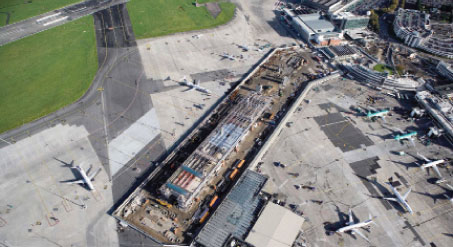
Pier D was built to facilitate fast turnarounds. The €120 million facility has 12 boarding gates and parking for up to 14 aircraft. It is linked to the existing terminal via an elevated Skybridge.
Collier explained that the priority at Shannon is to maintain transatlantic services, while a deepening of short-haul traffic is the emphasis at Cork.
2009 priorities
Collier’s three key areas of focus for the remainder of 2009 are to reduce costs, drive up revenues and deliver the planned infrastructure programme on time and to budget. DAA has an ambitious capital investment programme designed to stimulate traffic and deliver an enhanced passenger experience; work on the central element of this – Terminal 2 – continues apace. However, DAA has also demonstrated prudence in the current economic climate by reducing its capital expenditure programme for 2010-2014 by about 50%. The Commission for Aviation Regulation’s decision on airport charges for the next five-year period, due in October, is awaited with interest.







